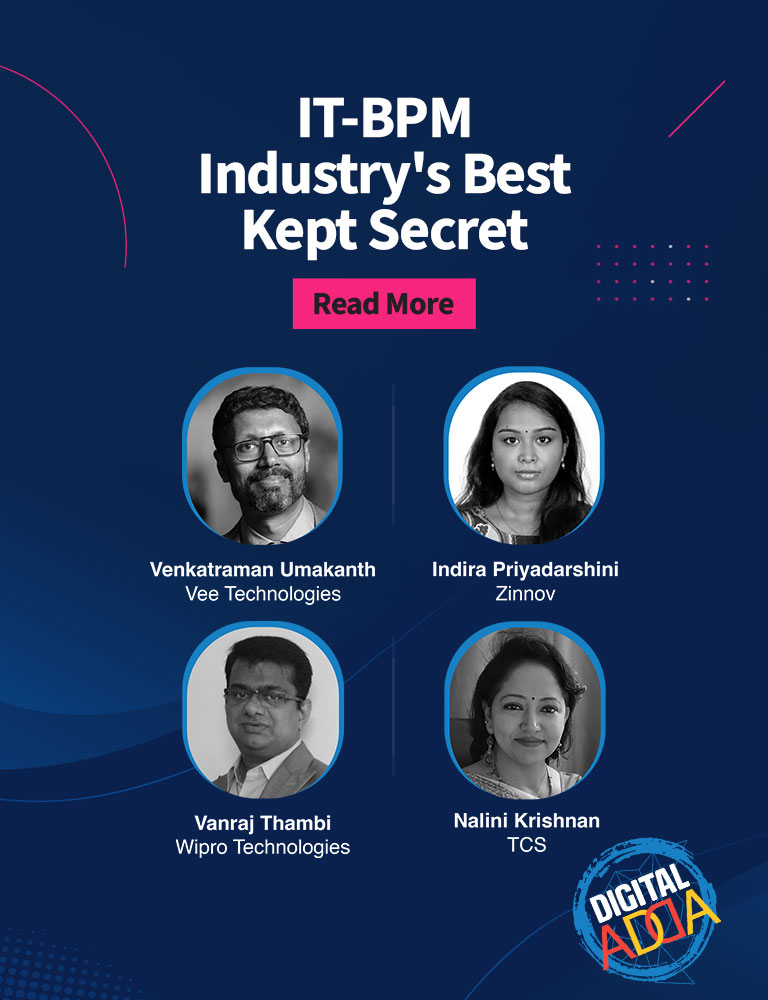IT-BPM Industry's Best Kept Secret
The story of the hare and the tortoise is no longer true. While technology, the proverbial hare, has been galloping at breakneck speed, curriculum across academic institutions has been the tortoise, barely moving from its place, which is one of the leading reasons only 35% of our graduates are employable once they pass out.
The other side of the story is tech talent demand supply gap which is at a staggering 20%.
The crucial question is how to bridge this gap.
You will be surprised to know - there is a possible solution. And it is one of India’s best kept secrets.
Competency standards is a framework of skills which creates a common understanding and terminology when discussing job roles and job skills. A common point of reference for industry, students and working professionals. It is an agreed way of doing something that defines the quality and quantity frameworks about making a product, managing a process, or delivering a service.
According to Nalini Krishnan, Head – Competency Management – SFDC Practice, TCS, Standardization of skills is the bridge that can tie the demand and supply. Standardization can lead to predictable talent grooming which will translate to employability and career progression. Standardization is really the need of the hour as organizations don’t have task-based roles in the industry; rather they are looking for much more that one can offer. Recruiters don’t look at a particular hard skill in a person but a group of right skills that fit the job description.
Did you know that nasscom has worked with the IT -BPM industry and put together competency standards or job standards for the top emerging technologies? To discuss if Skills Standardization is the answer to improve employability, nasscom FutureSkills Prime organized a Digital Adda round table. The session was moderated by Sridevi Sira, Lead Academia, FutureSkills.
Indira Priyadarshini, Senior Consultant, Zinnov, was part of the team that helped define and create the standards explained how the competency standards are modular in nature. The ideas was to create a common lexicon for all the stakeholders involved- educators, job seekers and companies.
What Job Standards do is combine the three-
- Top Job roles in demand
- Activities to be performed for the job and
- the skills required for the Jobs

These can then be used as a plug and play model based on requirements. Venkatraman Umakanth, VP & Head – Analytics and IT, Vee Technologies, opined that rigid skill sets for a particular job would not work. The starting point has to be to be job descriptions with flexible job skill sets. He shared that QP (Qualification Packs)/NOS (National Occupational Standards) had significant granularity and were being adopted by Vee Technologies in AI/ML and RPA to start with.
It is said that large enterprises have their own standards and criteria to judge potential hires; it is the MSMEs who would really benefit from using the competency standards as they would have limited wherewithal or human capital to build these. It would make life much easier for them to leverage the work & knowledge available rather than reinventing the wheel. Vanraj Thambi, Delivery Head – Talent Transformation, Wipro, shared that while Wipro has its own standards for all the technologies describing all the job roles, skills and competence level required, etc, it is also working with FutureSkills Prime and FSP certified freshers are getting an opportunity in Wipro.
Venkat also pointed out that it is important to have agility along with standardization. With rapidly evolving technology, standardization helps to define basic competencies which gives a person the ability to look at a long-term career within an organization and grow continuously by transitioning into roles with adjacent skills sets requirements. For e.g. A java professional can get into salesforce / cloud architect by upskilling; the person does not have to start from scratch. Another example is it would help a data engineer who aspires to be a data scientist to know what is the delta skills that is needed to make the transition.
Venkat shared an interesting incident where a candidate performed very well in the selection round but did not have a graduate degree. After some deliberation, the Management decided to go ahead and hire the candidate.
Nalini was of the view that there is a great value for getting certifications as it gives the learner a foundation and tells the recruiter that a person has invested time in learning a skill and are doing something to find a job related to that. Competency is not the only thing that will help one get a job but is definitely a great differentiator.

Conclusion
Awareness needs to be created then about IT-BPM Industry’s best kept secret - Competency Standards. These can be a vehicle for performance driven culture. While it can help candidates to decide the pace at which they want their career to move forward, it can also ease the pain of recruiters—bring students and professionals to a certain level and fitment for various organizations.To view the complete session, click here: https://www.youtube.com/watch?v=2oDSJNLORTA


